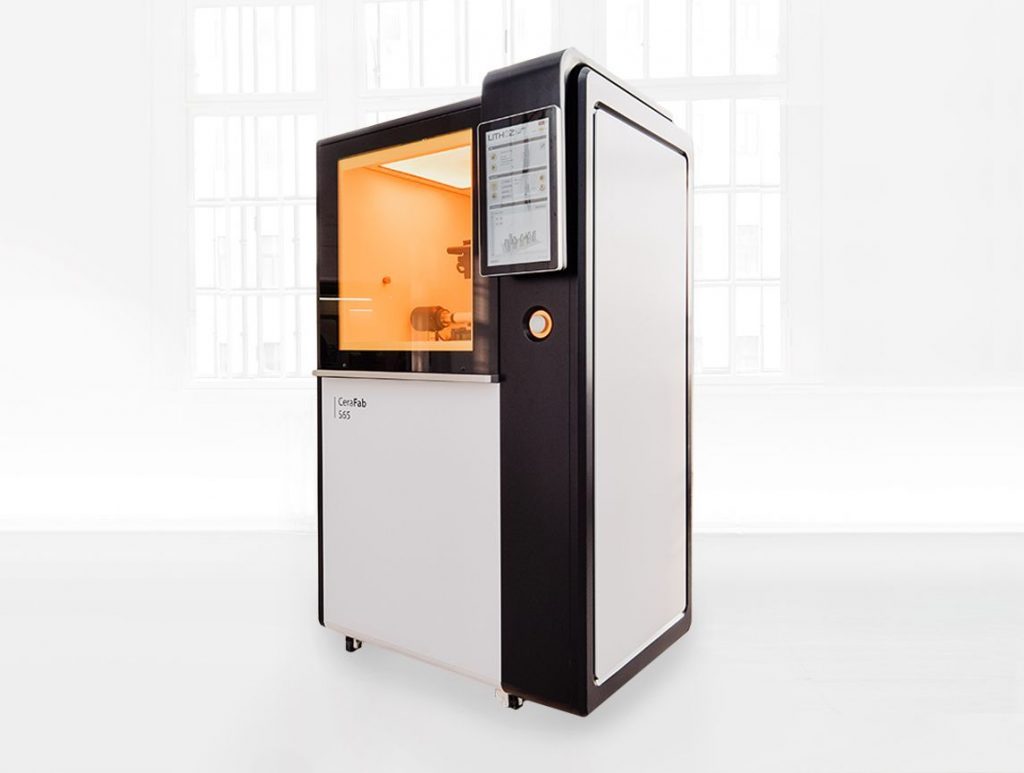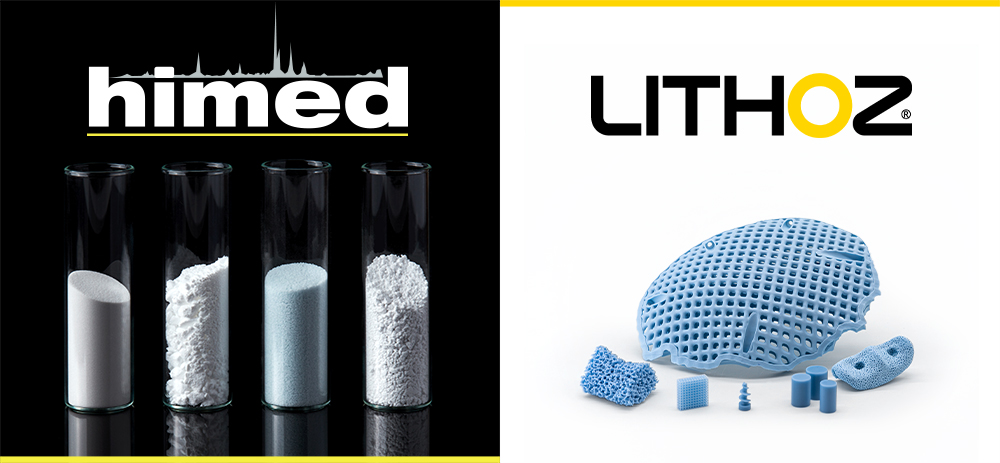Austrian ceramic 3D printing company Lithoz and New York-based biomaterials specialist Himed have announced a long-term partnership to drive innovation in the 3D printing of medical-grade bioceramics.
The partnership will focus on the development of medical implants using biocompatible calcium phosphates (CaP), seeking to meet growing demand for 3D printable bioceramic feedstocks.
This agreement, which follows the launch of Lithoz’s LithaBone HA 480 material at Formnext 2022, sees Himed acquire a Lithoz CeraFab S65 Medical 3D printer. Himed will install their new S65 at their 25,000-square-foot Long Island facility this fall. This 3D printer will enable more rapid on-site experimentation, and facilitate analytical testing at Himed’s in-house laboratory. It is claimed that the S65 will also allow Himed to broaden its R&D service offerings, enabling rapid prototyping for clients conducting unique biomaterials research.
The first research phase, headed by a joint team of material scientists, is set to take place this summer at Lithoz’s US facility located in Troy, NY. It is claimed that the two companies will establish an intercontinental pool of researchers to drive the next level of 3D printable bioceramics.
This partnership is said to form the next logical step in the large-scale commercialization of highly specific medical bioceramics. Moreover, this partnership will allow Lithoz to further explore additional CaP phases within the biomimetic forms their 3D printers can produce.
“Himed understands CaP optimization and how to scale it for a growing market. We’ve refined many calcium phosphates to strengthen their healing potential, but most of these were targeted toward surface coatings on traditionally manufactured titanium implants,” commented Himed CEO Dana Bernard.
“Lithoz’s remarkable 3D printing technology allows a whole new direction for our products, in which we can use CaP to its greatest advantage—as a biomimetic material within the implant structure itself that can be replaced by a person’s own natural bone over time.”
Lithoz CEO Dr Johannes Homa added that “This is definitely a big milestone for our partnership, and just a first starting point for a mutually beneficial collaboration for additive manufacturing of bone replacement.”

3D printed medical-grade bioceramics
Manufacturing on Demand
Thanks to their similarities to natural bone, calcium phosphates such as hydroxyapatite have gained widespread use in implanted devices, bone putties, and grafting materials. These materials can also aid in the organic regrowth of hard tissue at the implantation site. Since 1991, Himed has collaborated with various medical implant manufacturers to develop CaP powders and surface treatments for osseointegration.
This partnership with Lithoz is said to offer new opportunities for Himed within the medical additive manufacturing market, beyond bioactive surface treatments and implant prost-processing. Both companies believe there is still scope for research regarding developing CaP materials to optimize the performance of 3D printed implants.
This strategic partnership is said to represent the first step in expanding the range of biocompatible materials for the on-demand 3D printing of highly-customized, patient-specific medical solutions. Indeed, Lithoz’s tricalcium phosphate or hydroxyapatite-based LithaBone medical ceramics have already received attention within the medical field, having received a number of innovation study requests.
Offering both biocompatibility and osteoconductivity, Lthabone medical ceramics are said to present an attractive alternative to metals for use in human surgery. Lithoz’s LCM technology is also said to offer high precision and design flexibility, possessing innovation potential for lattice structures requiring specific osteoconductivity levels.

3D printed medical implants
The development of medical-grade implants is certainly a growing area within additive manufacturing. Earlier this year, the first surgeries featuring a revolutionary 3D printed spinal implant made from Evonik’s VESTAKEEP i4 3DF PEEK filament were conducted. The implant, which was developed by US-based technology firm Curiteva, is the first-ever 3D printed, fully interconnected porous polyether ether ketone (PEEK) implant of its kind for commercial use.
Elsewhere, last year it was announced that Dutch PEEK 3D printing start-up Bond3D and medical implant developer Invibio Biomaterials Solutions had developed a method of 3D printing spinal cages for improved patient recovery. These ‘next generation’ spinal cage implants not only offer the headline benefits of their predecessors, but can also be configured to stimulate new bone formation.
You might also like:
Amnovis’ FDA Master File simplifies regulatory submission process for 3D printed titanium medical implants: An ISO 13485 certified contract manufacturer, Amnovis’ FDA Master File features key information on all aspects of its qualified titanium 3D printing processes for Ti grade 1 and Ti-6Al-4V grade 23.
* This article is reprinted from 3D Printing Industry. If you are involved in infringement, please contact us to delete it.
Author: Alex Tyrer-Jones

Leave A Comment